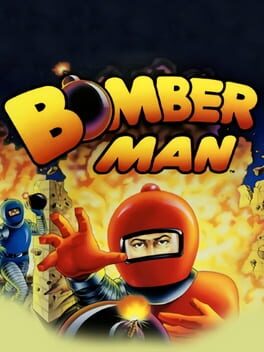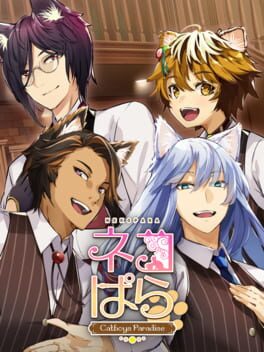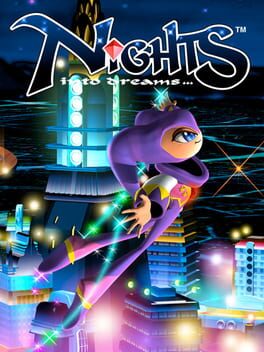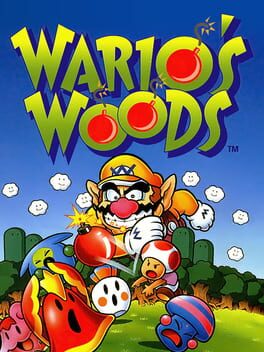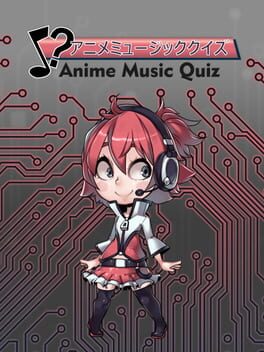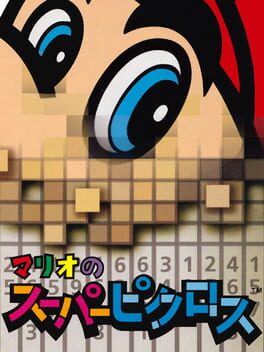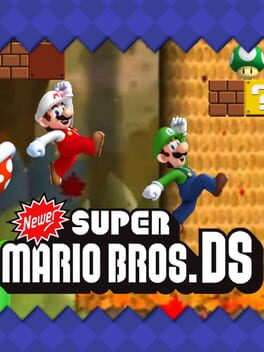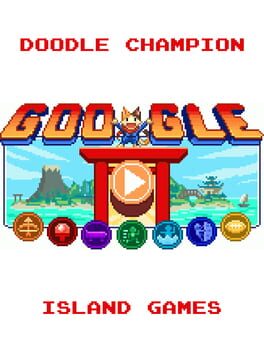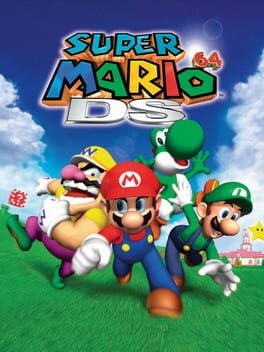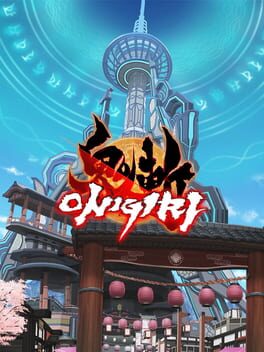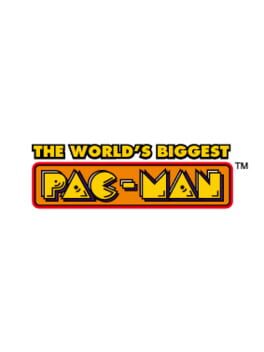mellorine
1990
It's fascinating seeing June Chikuma constantly reinvent her one Bomberman soundtrack over the course of ten years, as she demonstrates a thorough mastery of all sorts of sound chips... usually only on her second go with any given console. Bomberman '93 is generally known as her better soundtrack on the PC Engine as far as I know (it's quite similar to the SFC Super Bomberman 3 soundtrack, I think?), but I like this one a lot. The sound design choices really highlight how the PC Engine's sound chip was the next step forward in Namco's old wavetable-based sound chip - which probably also explains why they re-released so many of their games on this console.
Oh, uh, the game? It's Bomberman. It's basically identical to Bomberman II on NES as far as I can tell. It's not really much to write home about, especially if you're playing single player.
Oh, uh, the game? It's Bomberman. It's basically identical to Bomberman II on NES as far as I can tell. It's not really much to write home about, especially if you're playing single player.
2001
Oh, Pikmin... You're the one game I wish I could play again for the first time.
Growing attached to my small group of Pikmin, really feeling the loss of each individual Pikmin, only to grow into a horde where each death is merely a statistic, a necessary evil to optimize progress... it's a little chilling, and I think the team intended that, with Olimar even finding a certain peace in his position of power over the limited environment he finds himself in despite the deaths of the Pikmin, assuming you're actually good at the game.
But replaying the game is always an interesting experience, even if I won't get those exact same impacts again, or at least as strongly. When I started replaying this game for this playthrough, I'd actually played through half of the entire game in a single night, only realizing at that point that the sun was rising and this game had captivated me like few other games do.
It's eternally compelling, much like Super Mario 64. It's static and unchanging - but how you interact with it is a constantly evolving game that offers something new every single time.
Ignoring my Mario biases for a second, if I were to consider one Nintendo game as their magnum opus, this would be it. From beginning to end, in narrative to gameplay to themes, I think this is the most completely realized in a self-contained work.
It's such a shame the series is kept hostage by its sales. Pikmin deserves better.
Growing attached to my small group of Pikmin, really feeling the loss of each individual Pikmin, only to grow into a horde where each death is merely a statistic, a necessary evil to optimize progress... it's a little chilling, and I think the team intended that, with Olimar even finding a certain peace in his position of power over the limited environment he finds himself in despite the deaths of the Pikmin, assuming you're actually good at the game.
But replaying the game is always an interesting experience, even if I won't get those exact same impacts again, or at least as strongly. When I started replaying this game for this playthrough, I'd actually played through half of the entire game in a single night, only realizing at that point that the sun was rising and this game had captivated me like few other games do.
It's eternally compelling, much like Super Mario 64. It's static and unchanging - but how you interact with it is a constantly evolving game that offers something new every single time.
Ignoring my Mario biases for a second, if I were to consider one Nintendo game as their magnum opus, this would be it. From beginning to end, in narrative to gameplay to themes, I think this is the most completely realized in a self-contained work.
It's such a shame the series is kept hostage by its sales. Pikmin deserves better.
It's pretty mid all around. Laurier and Dill are cute, and Sage and Fennel are okay, especially in uniform, but their normal attire feel a bit forced - Dill too, actually.
The art and music's well-done for a free game, too.
It's pretty mediocre prose otherwise. I think I would have liked to see some more written responses from the protagonist, but like...
I don't know. I don't necessarily think games have to be super profound meaningful pieces of art, but I can't help but feel like it's still a bit too light on substance.
Who is this for? It's so myopically carefree and full of nothing but fluff that I have hangups about enjoying this game.
In some ways, I guess it's still better than what I've heard of the mainline Nekopara games, especially in subject material. But it's also obvious that there wasn't nearly as much effort or care put into this one - which is fair for a free game that probably would put off the entire playerbase of the previous games, but... oh, well.
...I won't pretend I'd mind having cats, actually.
The art and music's well-done for a free game, too.
It's pretty mediocre prose otherwise. I think I would have liked to see some more written responses from the protagonist, but like...
I don't know. I don't necessarily think games have to be super profound meaningful pieces of art, but I can't help but feel like it's still a bit too light on substance.
Who is this for? It's so myopically carefree and full of nothing but fluff that I have hangups about enjoying this game.
In some ways, I guess it's still better than what I've heard of the mainline Nekopara games, especially in subject material. But it's also obvious that there wasn't nearly as much effort or care put into this one - which is fair for a free game that probably would put off the entire playerbase of the previous games, but... oh, well.
...I won't pretend I'd mind having cats, actually.
1994
2018
"Consider this," jan Misali once said regarding Donkey Kong. "is there a way of interpreting the phrase 'overcoming great obstacles' any more literally than a person jumping over a large object that's in their way?"
Celeste comes across to me as a game about climbing a mountain, for people climbing their own mountains.
Maybe its way of representing these themes aren't as completely consistently presented as I would have wished, but I think it's still fairly in line with where I feel I'm at currently, and it's a compelling experience through and through.
I'll make another review once I've seen what Chapters 8 and 9 have in store for me.
┏┓
┃┃╱╲ in
┃╱╱╲╲ this
╱╱╭╮╲╲house
▔▏┗┛▕▔ we
╱▔▔▔▔▔▔▔▔▔▔╲
the celeste soundtrack by lena raine
╱╱┏┳┓╭╮┏┳┓ ╲╲
▔▏┗┻┛┃┃┗┻┛▕▔
Celeste comes across to me as a game about climbing a mountain, for people climbing their own mountains.
Maybe its way of representing these themes aren't as completely consistently presented as I would have wished, but I think it's still fairly in line with where I feel I'm at currently, and it's a compelling experience through and through.
I'll make another review once I've seen what Chapters 8 and 9 have in store for me.
┏┓
┃┃╱╲ in
┃╱╱╲╲ this
╱╱╭╮╲╲house
▔▏┗┛▕▔ we
╱▔▔▔▔▔▔▔▔▔▔╲
the celeste soundtrack by lena raine
╱╱┏┳┓╭╮┏┳┓ ╲╲
▔▏┗┻┛┃┃┗┻┛▕▔
2018
this is my 300th logged game on this site
and... i guess i wouldn't have it any way?
(update: i read the followup: Dialogue 1. it's actually really insightful that i feel almost embarrassed to admit that i learned something pretty profound from a visual novel styled blog post where the author gets constantly teased by her own fictional characters.)
and... i guess i wouldn't have it any way?
(update: i read the followup: Dialogue 1. it's actually really insightful that i feel almost embarrassed to admit that i learned something pretty profound from a visual novel styled blog post where the author gets constantly teased by her own fictional characters.)
Mario's Super Picross was my first Picross game ever, and my first impressions were nothing short of magical. I got hooked immediately, and in a summer full of boring Zoom classes, mental health issues and a general sense of ennui and listlessness I sought an escape from, Mario's Super Picross was it. I grinded through so much of the game and loved every bit of it.
To quote my initial review:
"this is potentially one of the best games on the nintendo switch library
i cannot imagine my life before picross anymore."
... But that was one year ago. I've finished this game just five minutes ago (as of this writing), and my feelings have shifted quite considerably.
The first thing I have to say is that Mario's Super Picross is one of very few games I've played where I can confidently say there's far too much content. Time after time, I've cleared out levels and modes thinking "wow, that was hard! I think that's about all that this game can throw at me."
And I was wrong, time and time again. The game has 300 whole puzzles, and the later ones can easily take up anywhere from thirty minutes to an entire hour to solve.
My total clocked time was over ninety hours, and... I think that's far too much. I doubt I've played some games I unabashedly love, games I tell myself I could go back to time and time again, for as long.
And I don't unabashedly love this game. The difficulty spike peaks, being extremely generous, around puzzle 250, and I'd say anything past 200 is honestly excessive already.
I'll take a tangent real quick and note that for a game simultaneously titled Mario's Super Picross and Wario's Super Picross, there's a noted lack of Mario and Wario here. Finding Wario's EX puzzles was a breakthrough moment for me in terms of what I think Picross is capable of, and it's a shame that it was so underutilized.
Wario's EX puzzles are written from his point of view, describing Mario's M emblem as "Bad Guy Mark", and describing his W as a "Hero's Mark", among other things - the sheer implication that these puzzle titles are written from the characters' point of view could have made for really fascinating exploration of characters, potentially even telling a story through overarching themes across puzzle descriptions (if any of you reading this decide to make a Picross game based on this concept -hi, I'm a composer looking to write music for video games! ...wait, i should actually bring this up to a friend who actually considered making a picross game).
Mario's Super Picross ultimately explores so very little about this concept, and only at the very tail end of the game. It's extremely disappointing.
So what you have left is an addictive, bloated game that doesn't do anything special. Its biggest draw is being a game that lets you live out the satisfaction of almost infinitely seeing boxes get checked.
"'Video games are bad for you'? That's what they said about rock and roll," said Shigeru Miyamoto once. But Picross might be the one (series of) game I've played that I'd be tempted to describe as "bad for you".
At least, to a certain kind of individual in a certain time. Maybe Mario's Super Picross gave me a kind of reprieve from my listlessness, from the boredom from my online classes - but it never solved anything. It let me so thoroughly escape that it took me arguably too long to truly admit to myself that I was in a position in life that I absolutely did not want to be in, and to go about changing that for myself.
I think the game was added to Nintendo Switch Online at simultaneously the best and worst time possible. It was a time when many people had much less to do, and could use a timesink of a distraction... but also a time where I'd argue that that's likely probably the worst thing a lot of people could have been doing at the time.
It's really funny, actually. I find the concept of Picross a bit too questionable to think this game deserves a high score, but I love the concept of Picross and its potential far too much to give this game an actually low score.
It's a great paradox of a game. I'll never forget it.
To quote my initial review:
"this is potentially one of the best games on the nintendo switch library
i cannot imagine my life before picross anymore."
... But that was one year ago. I've finished this game just five minutes ago (as of this writing), and my feelings have shifted quite considerably.
The first thing I have to say is that Mario's Super Picross is one of very few games I've played where I can confidently say there's far too much content. Time after time, I've cleared out levels and modes thinking "wow, that was hard! I think that's about all that this game can throw at me."
And I was wrong, time and time again. The game has 300 whole puzzles, and the later ones can easily take up anywhere from thirty minutes to an entire hour to solve.
My total clocked time was over ninety hours, and... I think that's far too much. I doubt I've played some games I unabashedly love, games I tell myself I could go back to time and time again, for as long.
And I don't unabashedly love this game. The difficulty spike peaks, being extremely generous, around puzzle 250, and I'd say anything past 200 is honestly excessive already.
I'll take a tangent real quick and note that for a game simultaneously titled Mario's Super Picross and Wario's Super Picross, there's a noted lack of Mario and Wario here. Finding Wario's EX puzzles was a breakthrough moment for me in terms of what I think Picross is capable of, and it's a shame that it was so underutilized.
Wario's EX puzzles are written from his point of view, describing Mario's M emblem as "Bad Guy Mark", and describing his W as a "Hero's Mark", among other things - the sheer implication that these puzzle titles are written from the characters' point of view could have made for really fascinating exploration of characters, potentially even telling a story through overarching themes across puzzle descriptions (if any of you reading this decide to make a Picross game based on this concept -
Mario's Super Picross ultimately explores so very little about this concept, and only at the very tail end of the game. It's extremely disappointing.
So what you have left is an addictive, bloated game that doesn't do anything special. Its biggest draw is being a game that lets you live out the satisfaction of almost infinitely seeing boxes get checked.
"'Video games are bad for you'? That's what they said about rock and roll," said Shigeru Miyamoto once. But Picross might be the one (series of) game I've played that I'd be tempted to describe as "bad for you".
At least, to a certain kind of individual in a certain time. Maybe Mario's Super Picross gave me a kind of reprieve from my listlessness, from the boredom from my online classes - but it never solved anything. It let me so thoroughly escape that it took me arguably too long to truly admit to myself that I was in a position in life that I absolutely did not want to be in, and to go about changing that for myself.
I think the game was added to Nintendo Switch Online at simultaneously the best and worst time possible. It was a time when many people had much less to do, and could use a timesink of a distraction... but also a time where I'd argue that that's likely probably the worst thing a lot of people could have been doing at the time.
It's really funny, actually. I find the concept of Picross a bit too questionable to think this game deserves a high score, but I love the concept of Picross and its potential far too much to give this game an actually low score.
It's a great paradox of a game. I'll never forget it.
I think it shows pretty obviously that Newer DS benefits from years of additional insight when it comes to level design, and the NSMB DS engine (and how much mileage the Newer team gets out of it) lends itself better to these kinds of traditional-with-a-twist levels than what Wii had.
Simply put? It's a pretty good Mario game! Just like the last one, some of its strongest levels are genuinely clever.
But it's also an amateur one still - star coins often don't know how to run a happy medium between painfully formulaic and excruciatingly obtuse, for example.
I imagine this would be what it'd be like if I tried to create a Mario game after a few months, maybe a few years of studying the series' levels. Decently thought out in theory, but a bit by-the-book in areas where I probably would deviate from the norm would I know exactly how to.
It's still better than Super Mario Maker.
Simply put? It's a pretty good Mario game! Just like the last one, some of its strongest levels are genuinely clever.
But it's also an amateur one still - star coins often don't know how to run a happy medium between painfully formulaic and excruciatingly obtuse, for example.
I imagine this would be what it'd be like if I tried to create a Mario game after a few months, maybe a few years of studying the series' levels. Decently thought out in theory, but a bit by-the-book in areas where I probably would deviate from the norm would I know exactly how to.
It's still better than Super Mario Maker.
2019
I tried the game for a little bit off of my cousin's copy. I didn't get very far before I returned it, but I was honestly really impressed with all the quality of life changes and even the art design.
Perhaps the only really jarring part of the first couple of hours might have been the opening sequence, where characters had their dialogue animated, but no audio indicated that at all; I think Pokémon could really benefit from Ace Attorney-style text scrolling sound effects, which could also let them convey expression a lot better than they do currently (shouting is done through a sharper textbox - even a simple textbox shake would help in emphasizing the volume).
I got out of Pokémon after Gen 5, so maybe this feels a lot more impressive to me than people who played through the 3DS games, but the world design feels a lot more satisfying to walk through - this was the first Pokémon game I felt a little bad to run in because of how pleasant the world felt.
Character customization is also one of my favorite feature in this game so far, and I easily spent half my playtime with it.
One last thought I have on the game has to do with the first battle with Hop: in a single battle, Pokémon Shield teaches about neutral attacks and stat changes, levelling up, and type advantages, possibly with the bare minimum of interruptions from Hop.
It's a stark contrast from Red and Blue, where after a boring Tackle-fest that feels more like a game of chance than anything, it's all too possible to wander into Route 22 straight out of your first time in Viridian City, encounter your rival and learn about super effective moves by being on the receiving end of them.
It's not better or worse - just different. Personally, I like this a lot. I think there's a lot to like in this game, and I wouldn't mind getting a copy for myself one day if the games stop going for full price for a second.
Perhaps the only really jarring part of the first couple of hours might have been the opening sequence, where characters had their dialogue animated, but no audio indicated that at all; I think Pokémon could really benefit from Ace Attorney-style text scrolling sound effects, which could also let them convey expression a lot better than they do currently (shouting is done through a sharper textbox - even a simple textbox shake would help in emphasizing the volume).
I got out of Pokémon after Gen 5, so maybe this feels a lot more impressive to me than people who played through the 3DS games, but the world design feels a lot more satisfying to walk through - this was the first Pokémon game I felt a little bad to run in because of how pleasant the world felt.
Character customization is also one of my favorite feature in this game so far, and I easily spent half my playtime with it.
One last thought I have on the game has to do with the first battle with Hop: in a single battle, Pokémon Shield teaches about neutral attacks and stat changes, levelling up, and type advantages, possibly with the bare minimum of interruptions from Hop.
It's a stark contrast from Red and Blue, where after a boring Tackle-fest that feels more like a game of chance than anything, it's all too possible to wander into Route 22 straight out of your first time in Viridian City, encounter your rival and learn about super effective moves by being on the receiving end of them.
It's not better or worse - just different. Personally, I like this a lot. I think there's a lot to like in this game, and I wouldn't mind getting a copy for myself one day if the games stop going for full price for a second.
2004
2013
In theory, a near-infinite, ever-changing series of Pac-Man maps would be incredible. Adapting to the different layouts on the fly, coming up with strategies to approach each different map - it's something I'd love to see high-level Pac-Man players give a shot.
But we'll need a far better platform to do that on than this.
The World's Biggest Pac-Man is also the most flawed, both for some extremely questionable decisions from the developers, and... well, have you looked at the mazes?
It's not entirely the users' fault, honestly - the user interface and tutorialization could have been far better.
The fact that when you start off a maze, the playing field is completely blank undoubtedly is what causes so many maps to be devoid of walls, leaving Pac-Man and the ghosts wide open... which is a battle Pac-Man loses almost invariably.
There are other checks I wish the game had the foresight to make: checking for dead ends, checking that all dot paths are only one tile wide, checking that Power Pellets are distributed with at least some semblance of evenness. All of these are issues that plague the majority of maps found in The World's Biggest Pac-Man.
Maybe it would be a little too stifling if the game had a hard check for these things and prohibited users from uploading maps that don't meet these criteria. After all, what if someone's intention was specifically to make an awful map for people to hate?
But I doubt that that was the intention of most people. Rather, I think that most people don't know how to design good Pac-Man levels, and that The World's Biggest Pac-Man completely fails in teaching people how to do so.
There are zero tutorials or breakdowns of what goes into a well-designed, interesting but fair Pac-Man maze design, and thus people are bound to just do whatever comes to mind, without considering if what they made is actually fun to play or not.
As for the reason why? I think The World's Biggest Pac-Man just straight-up doesn't understand Pac-Man.
Both the tile system and maze size is completely off-scale with the original arcade game - and even if you were to argue this as a deliberate choice in order to make it easier for people to design levels, no other aspect of The World's Biggest Pac-Man indicates that the original game's design was given any meaningful thought when translating into this sort of endless design.
Pac-Man cannot make his signature tighter turns as very clearly outlined in the Championship Edition games, meaning that ghosts often close up on Pac-Man when turns are involved.
The ghost AI are extremely questionable, and have none of the deliberate AI sensibilities found in the original game besides "Blinky is the most tenacious one, I guess".
There's a lot of very shoddy, half-baked measures to make sure that players won't absolutely bleed lives from the atrociously designed mazes - ghosts never speed up, and Pac-Man is always faster than them when travelling in straight lines; the power pellets last a consistent duration of time, which I think is the single most deliberately well-designed choice to come from this game; and the bonus fruit progression system means that if you can hypothetically grind your way up to the key, it might be possible to find yourself in a fairly endless potential for play as long as you spend as little time in poorly designed or otherwise difficult mazes and make a beeline for deliberately easy mazes.
I think The World's Biggest Pac-Man is a framework built by people who don't understand Pac-Man, and a game supported by people who don't understand Pac-Man.
And that's fine. I don't expect the general public to be this pedantic about the intricacies of Pac-Man.
But The World's Biggest Pac-Man tells me not to expect the general public to make a good game that I enjoy.
...so will someone please tell me why on earth i bought Super Mario Maker 2?
But we'll need a far better platform to do that on than this.
The World's Biggest Pac-Man is also the most flawed, both for some extremely questionable decisions from the developers, and... well, have you looked at the mazes?
It's not entirely the users' fault, honestly - the user interface and tutorialization could have been far better.
The fact that when you start off a maze, the playing field is completely blank undoubtedly is what causes so many maps to be devoid of walls, leaving Pac-Man and the ghosts wide open... which is a battle Pac-Man loses almost invariably.
There are other checks I wish the game had the foresight to make: checking for dead ends, checking that all dot paths are only one tile wide, checking that Power Pellets are distributed with at least some semblance of evenness. All of these are issues that plague the majority of maps found in The World's Biggest Pac-Man.
Maybe it would be a little too stifling if the game had a hard check for these things and prohibited users from uploading maps that don't meet these criteria. After all, what if someone's intention was specifically to make an awful map for people to hate?
But I doubt that that was the intention of most people. Rather, I think that most people don't know how to design good Pac-Man levels, and that The World's Biggest Pac-Man completely fails in teaching people how to do so.
There are zero tutorials or breakdowns of what goes into a well-designed, interesting but fair Pac-Man maze design, and thus people are bound to just do whatever comes to mind, without considering if what they made is actually fun to play or not.
As for the reason why? I think The World's Biggest Pac-Man just straight-up doesn't understand Pac-Man.
Both the tile system and maze size is completely off-scale with the original arcade game - and even if you were to argue this as a deliberate choice in order to make it easier for people to design levels, no other aspect of The World's Biggest Pac-Man indicates that the original game's design was given any meaningful thought when translating into this sort of endless design.
Pac-Man cannot make his signature tighter turns as very clearly outlined in the Championship Edition games, meaning that ghosts often close up on Pac-Man when turns are involved.
The ghost AI are extremely questionable, and have none of the deliberate AI sensibilities found in the original game besides "Blinky is the most tenacious one, I guess".
There's a lot of very shoddy, half-baked measures to make sure that players won't absolutely bleed lives from the atrociously designed mazes - ghosts never speed up, and Pac-Man is always faster than them when travelling in straight lines; the power pellets last a consistent duration of time, which I think is the single most deliberately well-designed choice to come from this game; and the bonus fruit progression system means that if you can hypothetically grind your way up to the key, it might be possible to find yourself in a fairly endless potential for play as long as you spend as little time in poorly designed or otherwise difficult mazes and make a beeline for deliberately easy mazes.
I think The World's Biggest Pac-Man is a framework built by people who don't understand Pac-Man, and a game supported by people who don't understand Pac-Man.
And that's fine. I don't expect the general public to be this pedantic about the intricacies of Pac-Man.
But The World's Biggest Pac-Man tells me not to expect the general public to make a good game that I enjoy.
...so will someone please tell me why on earth i bought Super Mario Maker 2?
